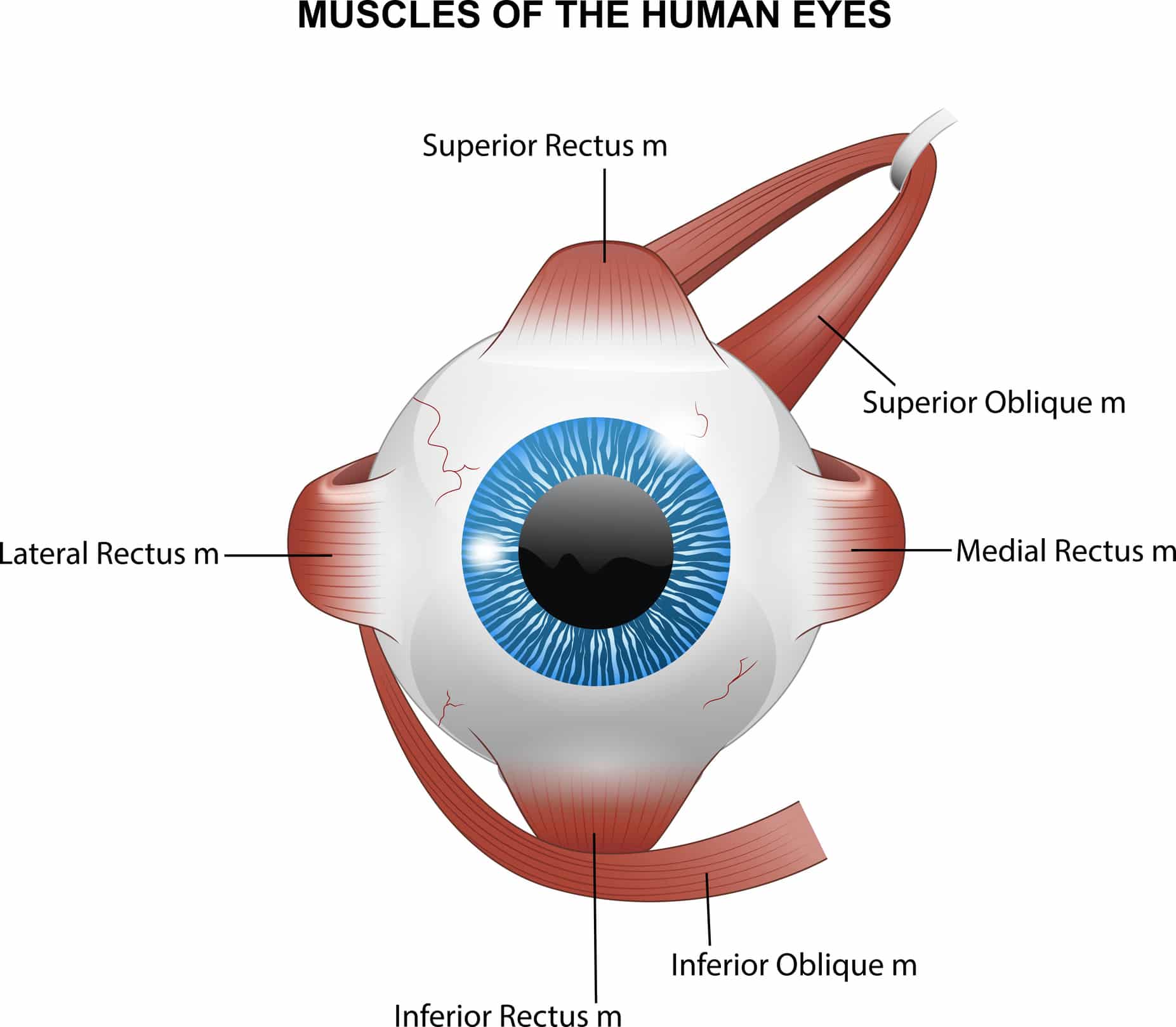
There are six muscles that are present in the eye socket and attach to the eye to move it. These muscles work to move the eye up and down and side to side and to rotate the eye.
Strabismus Treatment
Strabismus, or crossed eyes, is the term for when a person cannot align both eyes on an object at the same time. The condition occurs in about 5% of children, and many adults suffer from it as well. Strabismus can be congenital (present from birth) or acquired from eye injury, diabetes, stroke and other conditions. Strabismus may manifest at first as double vision.
If left untreated, it can lead to visual impairment, loss of binocular vision, and blindness in the weaker eye. For children, early treatment is best, preferably before the age of six. Older patients can be helped as well; it's never too late to seek treatment. Strabismus treatment often includes prescribing glasses and exercising the eye muscles.
Ptosis Repair
Ptosis is a condition in which the eyelid droops. It is caused by a weakness or separation of muscles deep within the eyelid. Ptosis does not involve excess skin or tissue in the eyelid (a condition called dermatochalasis). It is usually a result of aging, but some people develop ptosis after eye surgery or an injury, and some children are born with the condition. A brief surgical procedure can eliminate the drooping.
Many young patients with mild to moderate ptosis do not need surgery early in life. Patients who are also suffering from excess skin may choose to undergo blepharoplasty at the same time as ptosis repair. Children with ptosis should be examined regularly to check for other vision problems including amblyopia ("lazy eye"), refractive errors and muscular diseases.
Congenital Cataracts
While cataracts are often considered a condition affecting older patients, it can also affect children as a congenital condition. Children with congenital cataracts are born with a naturally cloudy lens instead of a clear one. This may appear on the eye as a white spot within the dark pupil or failure of the infant to show visual awareness.
Congenital cataracts may occur as a result of:
- Inherited tendencies
- Infection
- Metabolic problems
- Diabetes
- Trauma
- Reaction to medications
If left untreated, this condition can lead to other eye problems such as amblyopia, strabismus and difficulty focusing, in addition to the cloudy vision. Mild cases of congenital cataracts may not require any treatment other than being monitored on a regular basis, but those that affect vision often need to be removed and replaced with an artificial intraocular lens (IOL) in a traditional cataract surgery.
Amblyopia
Amblyopia, commonly known as lazy eye, is an eye condition that results in reduced vision in one eye. This condition affects two to three percent of the population as a result of genetic causes, related conditions or trauma. When this condition occurs, the unaffected eye usually becomes stronger and suppresses the amblyopic eye, often rendering it useless.
Patients with amblyopia may experience eyestrain, squinting, headaches and overall poor vision.
This condition usually develops in children before the age of six, and can significantly affect central vision if left untreated. While many cases are caused by a misalignment of the eyes, such as strabismus or crossed eyes, amblyopia can also be caused by trauma to the eye or a very strong refractive error.
Effective treatment for amblyopia depends on the underlying cause of the condition, but may include glasses to improve focusing or eye exercises to correct improper vision habits. Eye drops and patching may also be prescribed. More serious cases or those that do not respond to conservative treatment may need surgery to straighten the eyes so that they can focus together and see properly.
